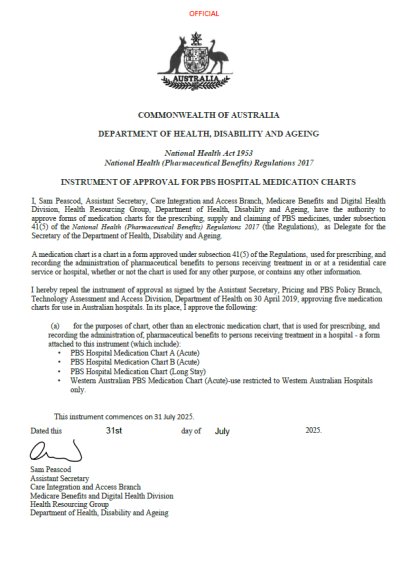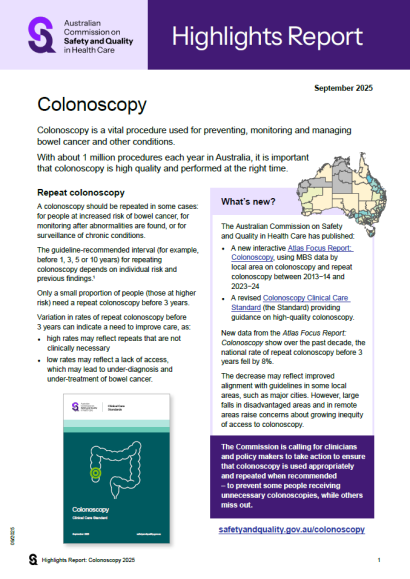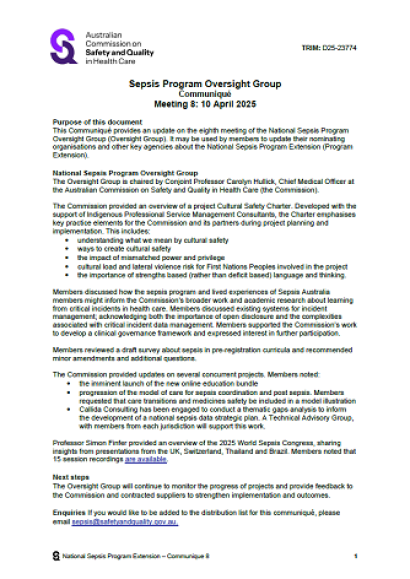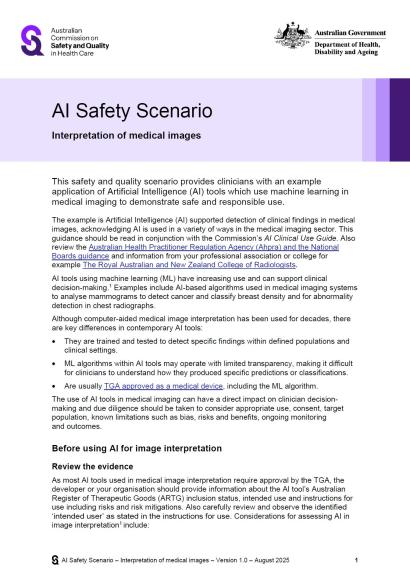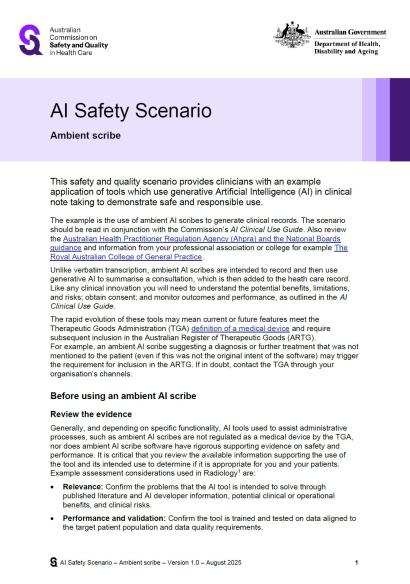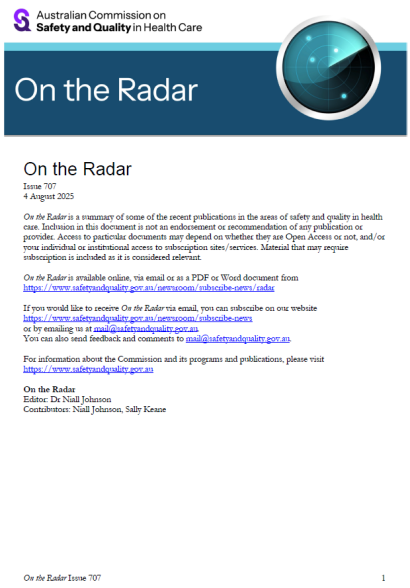Are you involved in implementing one of our national Clinical Care Standards? Join us for a webinar discussion as part of the celebration of 10 years of Clinical Care Standards in Australia.
This Instrument of Approval for PBS Hospital Medication Charts was signed on 31 July 2025 by Sam Peascod, Assistant Secretary, Care Integration and Access Branch, Medicare Benefits and Digital Health Division, Department of Health, Disability and Ageing.
Download the Highlights Report for an overview of the updated Colonoscopy Clinical Care Standard and new trend data on repeat colonoscopy from the Australian Atlas of Healthcare Variation (Atlas) Focus Report: Colonoscopy. This outlines actions for policy makers, clinical colleges, health services and clinicians.
On the Radar Issue 707 is now available.
On the Radar Issue 706 is now available.
We are excited to announce the National Medicines Symposium 2025 will be held on 22 October 2025. This year, we will dive into the topic of 'Quality use of medicines in people living with diabetes'.
This Communiqué provides an update on the eighth meeting of the National Sepsis Program Oversight Group (Oversight Group). It may be used by members to update their nominating organisations and other key agencies about the National Sepsis Program Extension (Program Extension).
This safety and quality scenario provides clinicians with an example application of Artificial Intelligence (AI) tools which use machine learning in medical imaging to demonstrate safe and responsible use.
This safety and quality scenario provides clinicians with an example application of tools which use generative Artificial Intelligence (AI) in clinical note taking to demonstrate safe and responsible use.
This issue includes items on mental health, antimicrobials, surgery, maternity care, cultural security, and more. Along with the latest from The Joint Commission Journal on Quality and Patient Safety, BMJ Quality & Safety, The Lancet Primary Care, HealthcarePapers, Health Affairs Scholar and the USA’s AHRQ

